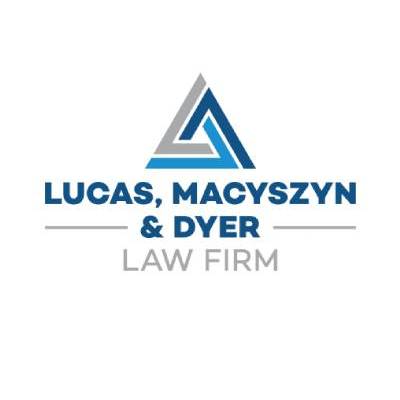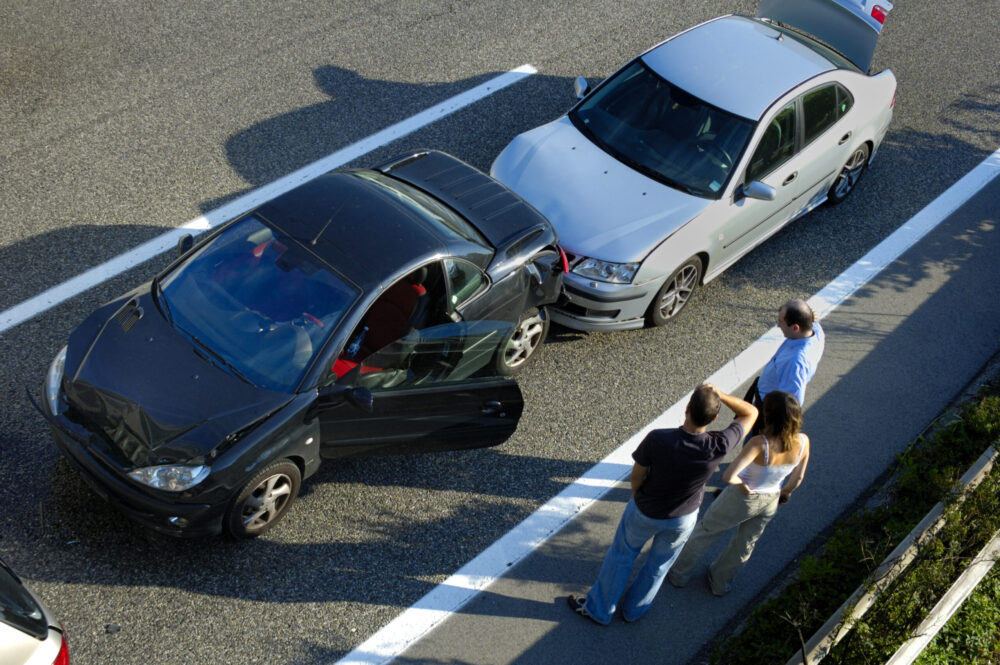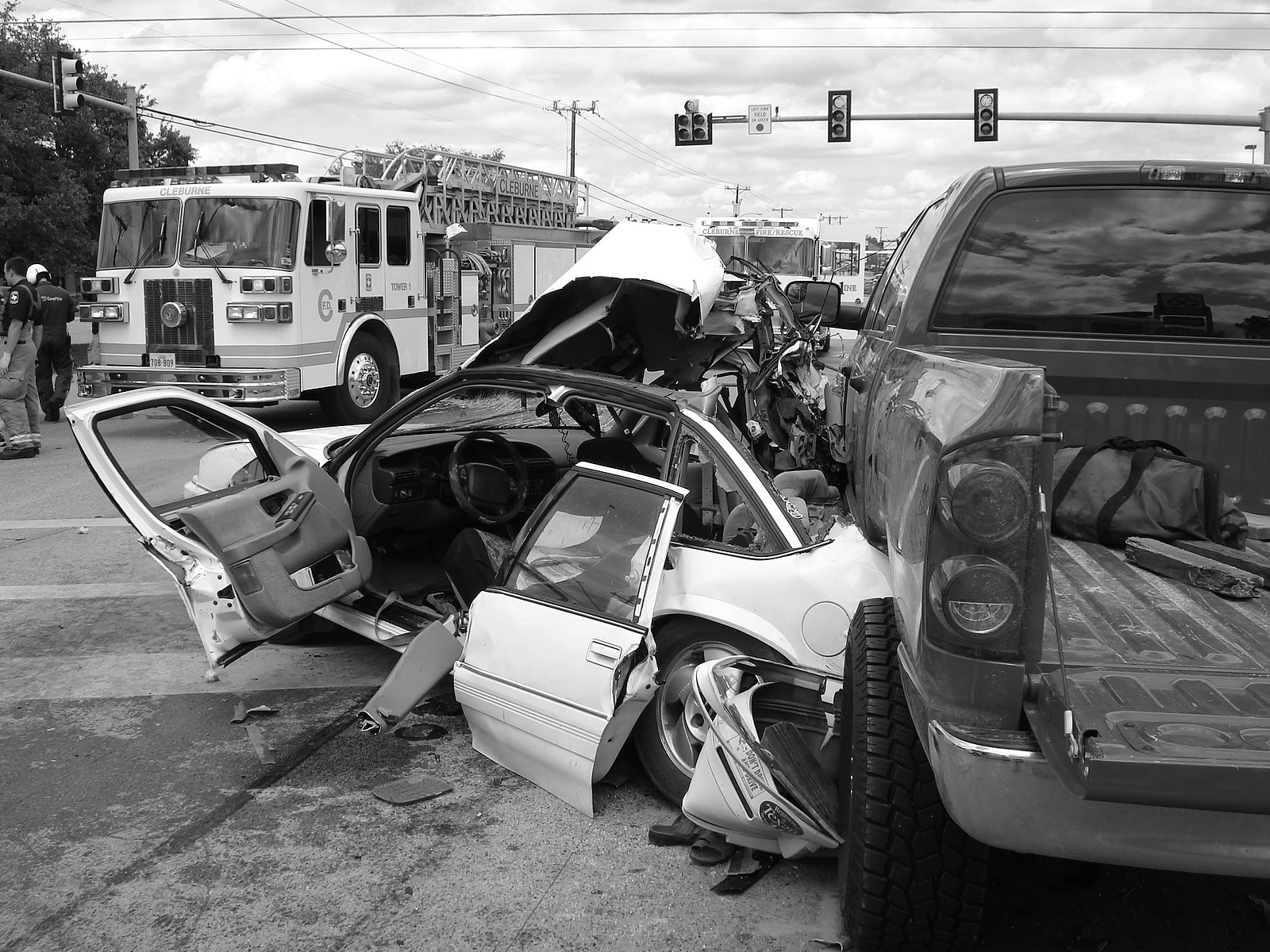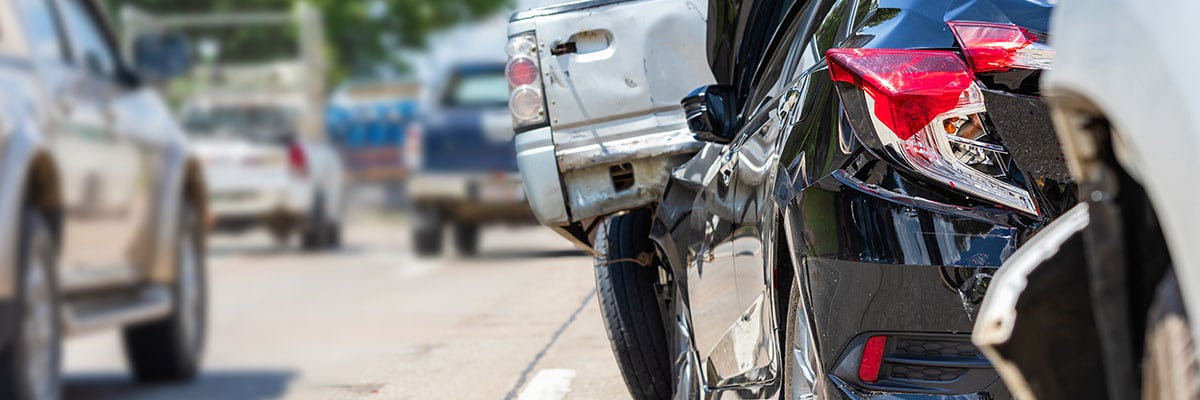
Rear-end collisions are the most common car accidents nationwide. Many causes lead to these collisions, from driver distractions to manufacturer errors. Since they are so common, many people do not take them seriously. However, rear-end collisions can lead to severe injuries and losses. Some injuries are permanent and require long-term care, leaving victims out of work.
The rear driver is usually at fault and responsible for paying for any resulting losses, though no claim is straightforward. By seeking the guidance of a New Port Richey accident attorney, you can find out how to recover from your injuries and recover your losses and pain, and suffering.
Causes of Rear-end Collisions
Often, rear-end collisions or fender benders happen on daily commutes when traffic is bumper to bumper. These accidents usually seem minor because vehicles are traveling at low speeds. However, serious injuries and losses can result.
Distractions and following too closely are some causes of rear-end collisions, but there are many others.
Causes of rear-end collisions are often:
- Drinking
- Road defects
- Drowsy driving
- Speeding
- Weather
- Rubbernecking
- Vehicle malfunctions
- Construction
What Are Multi-vehicle Accidents?
When two vehicles are in a rear-end collision, the fault is likely on the rear driver. However, when there are three or more vehicles, it complicates the recovery process. It is likely that the last driver is responsible and pays for any losses, though the middle driver might also share liability. The lead driver must deal with multiple insurance companies to seek compensation.
How Can You Establish Fault in a Rear-end Crash?
All drivers have a duty to follow the law and keep each other safe. One of the rules drivers must follow is to keep a safe distance from other vehicles. Safe distances will change depending on road conditions, vehicle speed, and other factors. Following too close is a contributing factor in many rear-end collisions.
When drivers fail to follow the law about following distance, they are at fault for the accident. Establishing fault is a significant aspect of the insurance claim process, as fault will determine which insurance company will pay for losses.
It is rare for the lead driver to be at fault for the accident. However, other parties aside from the drivers can be responsible for the collision. Defective vehicle parts can also factor into the crash. If a legal investigation finds a brake failure, the manufacturer can be at-fault for the crash.
Third parties who can contribute to a collision and be at fault include:
- Mechanics: if they installed or did not warn about a defective vehicle part. They are also at fault if they install the wrong part.
- Parts manufacturer: when a manufacturer sells a defective part to a repair shop or dealership.
- City government entity: local governments who fail to repair broken traffic signals and roads or clean up debris lead to rear-end collisions.
Many victims assume the rear driver is at fault until an investigation reveals otherwise. A car accident lawyer will review traffic camera footage, crash reports, collision photographs, and witness accounts to help determine fault. Other evidence can help show fault and negligence.
Do You Have to Prove Negligence in a Rear-end Accident?
Negligence is any action from someone who hurts someone else because they fell below the basic standard of care. A person is negligent when they act unreasonably and someone suffers an injury.
Reasonability and standard of care will vary depending on the circumstances.
Some examples of driver breaches include:
- Right-of-way errors
- Not paying attention to the road or looking for hazards
- Losing control of the vehicle
- Not stopping within a reasonable time
- Failing to use a turn signal
- Failing to drive appropriately for road or weather conditions
- Following too closely or at a safe distance
Proving negligence involves showing that the driver owed you a duty, breached said duty, and caused the accident. Victims must also show they suffered damages from the collision.
What Are Some Common Rear-end Collision Injuries?
Whether the rear-end collision happens at low or high speeds, it can cause injuries. Even a low-speed accident can lead to severe injuries. Some factors that can affect the severity of injuries are speed, crumple zones, and driver actions.
Injuries that are prevalent in rear-end collisions include:
- Head and brain: your face, neck, and head are susceptible to injury, usually from airbags not deploying during low-speed collisions. When airbags don’t deploy, vehicle occupants can hit themselves on the dashboard. Traumatic brain injuries can also happen in low or high-speed accidents.
- Back and neck: disc herniations are prevalent in all car crashes. It happens when there is compression in the spinal cord. Pain and soreness will quickly become unbearable, and they can cause nerve damage.
- Wrist, hand, and arm: the impact of a rear-end crash can cause wrist, arms, and hands to hit parts of the vehicle, whether from force or trying to brace for impact. These injuries can lead to fractures, breaks, and bruises. If airbags deploy, other injuries can result.
- Seat belt injuries: wearing a seatbelt is a safety precaution, but it can sometimes lead to injuries. These injuries can usually be less than those a person might sustain without a seatbelt. Most often, victims can have bruising and lacerations.
- Whiplash: When the neck, shoulders, or spine lurch forward, it can cause hyperextension. These injuries can last long, with some victims reporting pain and soreness for over a year. Whiplash occurs in an estimated 20 percent of rear-end collisions.
Can Symptoms Be Delayed After a Crash?
Adrenaline is running through you and, sometimes, an injury can result in delayed symptoms. You will often begin to feel symptoms when your muscles relax and the adrenaline subsides. Once you settle down, you can experience the full force of your injuries and require immediate medical attention.
Getting medical attention from the scene is advisable, but some vehicle occupants do not have severe pain until later. You have limited time to get medical attention before it affects your ability to file a claim.
Some symptoms will appear after days or weeks, and you should speak to a doctor as soon as you feel any pain. Your medical records are vital to your injury claim. Medical documents are evidence to show you suffered injuries and losses from the rear-end collision. The sooner you get treatment, the stronger your injury claim. However, do not force yourself to see a doctor if you have no injuries or exaggerate your injuries.
Common delayed symptoms can include:
- Numbness
- Shoulder and neck stiffness
- Back pain
- Headaches
- Abdominal pain
Treatment Can Be Extensive
Treatment for your injuries is essential to your recovery. You must take all the time you need to recover and get treatment to help you heal properly. Treatment will vary depending on the severity of your injury.
Some common treatments for rear-end collision injuries are:
- Wear a brace: broken bones, neck and back injuries, and others can require patients to wear braces to stabilize the body. Wearing a brace can also prevent additional injury and pain. Not every injury will require wearing a brace, as sometimes your injuries require movement when healing.
- Medication: doctors can prescribe painkillers when over-the-counter pain relief is insufficient to help you. This is a short-term solution because pain medication can become addictive.
- Physical therapy: attending physical therapy is standard after car accidents, and a physical therapist will assess your injury and set you up on a plan. You will likely have to do gentle exercise, massages, strength training, and more.
- Injections: for severe injuries, you can also require spinal injections. These procedures can help with swelling and pain. You can couple them with rest and stretches as well.
- Surgery: when an injury becomes debilitating and nothing else works, your doctors might recommend surgery. Back and neck surgery is scary for victims, and they often ask for a second opinion.
Treatment for your injuries will vary by the severity and location of the injury. Your symptoms are also vital to determine your treatment plan. Treatment costs are usually a major chunk of an insurance claim. However, treatment can quickly exceed policy limits, requiring you to seek compensation through other resources. Your car accident lawyer can identify all possible sources of compensation for your medical bills and other losses.
How Do You Get Compensation After a Rear-end Accident?

The tailing driver is usually legally responsible for monetary damages. Compensation will vary in each accident, including vehicle repair costs, medical expenses, and more. Generally, the worse your injuries, the higher your claim’s value and the more you can seek. The length and extent of your treatment will also affect your compensation.
Insurance policy limits will also factor into your compensation amount. Every insurance policy has limits. If your losses exceed those limits, it is challenging to recover for your additional expenses. If the insurance company cannot pay your claim, you might have other options.
The insurer will also fight against your claim regardless of whether you are within policy limits. The insurance company’s adjusters and attorneys have many ways to limit payments to claimants. You need a car accident attorney with strong negotiation skills fighting for every dollar you deserve.
What Types of Compensation Can You Get in a Rear-end Crash?
Sometimes, victims don’t realize which losses they can claim. Insurance companies will tell you what they believe your claim is worth, but you should not trust this figure. You must have a local car accident attorney calculate your losses.
Some examples of compensation from rear-end collisions include:
- Lost income: any compensation you have lost since the accident because you cannot work. This includes compensation for any projects independent contractors cannot take on.
- Medical expenses: hospitalizations, lab tests, pain medications, assistive medical devices, surgery, and follow-up visits. You must calculate past and future medical costs, especially if you have a permanent injury.
- Disfigurement: any permanent scars or changes in your mobility. Changes in appearance impact your self-esteem and life enjoyment.
- Mental anguish: any emotional trauma stemming from the collisions. This might include anxiety, depression, or PTSD.
- Diminished earning potential: any money you cannot make in the future because of your physical limitations, leaving you unable to work. Additionally, you can seek the difference in income from taking a lower-paying job as opposed to what you made before the collision.
- Pain and suffering: physical limitations you suffer from the injuries you experience. The calculation is very complex since it involves the pain and torment from the time of the accident to the future.
Families who lose a loved one can file wrongful death claims to recover other losses. Average claim amounts will vary depending on individual factors. They can range from a few thousand to hundreds of thousands or even millions in compensation. You must speak to a nearby car accident attorney to determine your case’s worth.
How Long Does it Take To Settle a Rear-end Accident?
Understandably, injury victims want their settlement quickly, but insurance companies often use delaying tactics to prolong the process. The insurance company will send low offers hoping you will take them. Many times rear-end settlements will take several months or even years.
Filing a lawsuit can extend this timeline. Victims might feel stressed or surprised when they keep running into delays in the process. Your rear-end collision lawyer will guide you and discuss potential delays.
Settlement negotiations can take time, which is another reason your claim can take longer than you might anticipate. Negotiations can be contentious and complex when neither side wants to budge.
Insurance companies are notorious for downplaying injuries in rear-end collisions or pinning the injury on something else. Your injury treatment will also impact the claim length since you should avoid settling before knowing the future of your injury.
Contact an Auto Accident Lawyer in New Port Richey, FL
Start the claim process with a rear-end car accident attorney

After a rear-end collision, the first move is to get medical attention. The second phone call you should make is to a local law firm. An attorney can review what happened and advise you who should pay for your rear-end collision and resulting injuries.
Always speak to a lawyer before moving forward. In some cases, you might have to file a car accident lawsuit. A car accident lawsuit is very complex, and you need legal representation. Schedule a consultation with a car accident lawyer to review your legal options.



